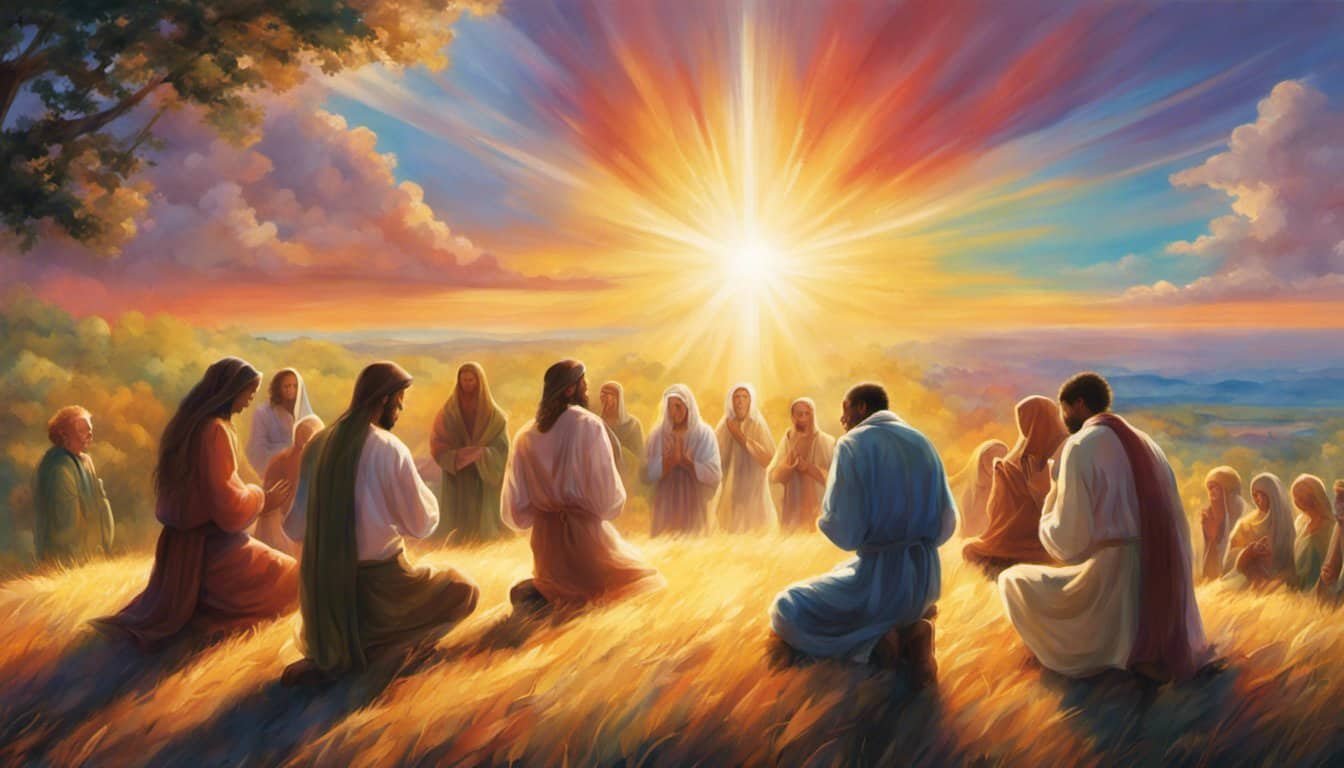Ever wondered about the origins of the Old Testament? You’re not alone. This ancient collection of texts has fascinated scholars, theologians, and curious minds for centuries. The Old Testament, also known as the Hebrew Bible, is a cornerstone of religious tradition and history, but its beginnings are shrouded in mystery and intrigue.
Diving into its origins, you’ll find a blend of history, mythology, and faith. These texts were written over centuries, capturing the beliefs, laws, and stories of the ancient Israelites. From the creation narrative in Genesis to the prophetic books, each part offers a glimpse into a world long past yet still resonant today. So, let’s embark on a journey to uncover where the Old Testament truly comes from and what makes it such a foundational piece of our cultural and spiritual heritage.
Historical Background of the Old Testament

You’re probably curious about where the Old Testament comes from. It’s a fascinating journey that dates back thousands of years and offers incredible insights into our faith.
Origins and Authorship
The Old Testament was written over several centuries. Different people, inspired by God’s spirit, wrote these books. Some were leaders like Moses, while others were prophets like Isaiah. Each book reflects the times and situations of its authors but carries one central message—God’s relationship with His people.
Key Ancient Texts

Some key texts help us understand the Old Testament’s history. The Dead Sea Scrolls, discovered in the 1940s, date back to 300 BCE. These ancient writings offer the oldest copies of some Old Testament books. Another important source is the Masoretic Text, completed around the 10th century CE. It serves as the authoritative Hebrew Bible for Judaism and Christianity.
By looking at these ancient texts, we can see how faithfully God’s word has been preserved over millennia. This rich history of the Old Testament connects past generations to our faith today.
Cultural and Religious Context
The Old Testament is more than just a religious text; it’s rooted in rich cultural and religious history. Its formation reflects the influence of various cultures and has played a significant role in the Jewish religion.
Influences from Surrounding Cultures
The Old Testament was shaped by interactions with neighboring cultures. For instance, stories from Mesopotamia and Egypt influenced some biblical narratives. Ancient laws from these regions also impacted the legal codes found in books like Exodus and Deuteronomy.
Role in Jewish Religion
For centuries, Jewish communities have viewed the Old Testament as sacred scripture. It’s central to Jewish worship and daily life, guiding moral and ethical decisions. Festivals, rituals, and prayers in Judaism often center around its teachings and commandments.
Evolution of the Old Testament Text
Transmission and Translation
The Old Testament has been handed down through generations with great care. Jewish scribes meticulously copied the texts to preserve their accuracy.
Over time, translations emerged to make the text accessible to more people. The Septuagint, a Greek translation, played a crucial role in spreading these scriptures throughout the ancient world.
Canonization Process
Not all ancient writings became part of the Old Testament. Religious leaders and scholars carefully decided which books were divinely inspired and should be included.
This process wasn’t quick. It took centuries for the Jewish community to recognize and agree on the authoritative books.
The Old Testament in Modern Times
The Old Testament isn’t just an ancient text; it remains relevant today. Christians and Jews many times refer to its teachings in their daily lives.
Academic and Theological Interpretations

Scholars study the Old Testament to understand God’s messages better. They compare Hebrew texts and ancient manuscripts to learn about history and faith.
Theologians delve into its deeper meanings. They explore how Old Testament prophecies connect to Jesus and modern life.
Impact on Contemporary Religious Practices
Churches often use Old Testament readings in services. These scriptures offer wisdom and guidance for living a faithful life.
In your daily devotions, you might read Psalms or Proverbs. They’re part of the Old Testament and provide comfort and advice.
So, even today, the Old Testament shapes and enriches Christian practices. It helps believers understand their faith more deeply.
Conclusion
The Old Testament’s journey from ancient texts to a cornerstone of modern faith is truly remarkable. Its stories, laws, and prophecies have shaped cultures and inspired countless individuals over millennia. Whether you’re exploring its historical context or seeking spiritual guidance, the Old Testament offers a rich tapestry of wisdom and tradition. Its enduring legacy continues to touch lives and foster a deeper understanding of faith and history. So next time you open its pages, remember you’re connecting with a profound heritage that has stood the test of time.
Frequently Asked Questions
What is the Old Testament?
The Old Testament is a collection of religious texts significant in Judaism and Christianity. It includes writings from various authors like Moses and Isaiah and is used for religious teachings and historical reference.
Who wrote the Old Testament?
Multiple authors, including Moses, Isaiah, and other prophets, are believed to have contributed to the Old Testament.
What is the cultural and religious context of the Old Testament?
The Old Testament was written in a cultural and religious context deeply rooted in ancient Jewish traditions and beliefs.
How was the Old Testament transmitted through generations?
Jewish scribes meticulously copied and preserved the texts, ensuring their transmission through generations.
What is the Septuagint?

The Septuagint is a Greek translation of the Hebrew Bible, created to make the scriptures accessible to Greek-speaking Jews.
What is the canonization process of the Old Testament?
The canonization process involved religious leaders selecting books they believed were divinely inspired to be included in the Old Testament.
Why is the Old Testament relevant today?
The Old Testament continues to influence Christians’ and Jews’ daily lives, offering wisdom, guidance, and historical insights into faith.
How do scholars and theologians use the Old Testament?
Scholars and theologians study the Old Testament to understand God’s messages, historical contexts, prophecies, and their connections to Jesus.
What impact does the Old Testament have on contemporary religious practices?
The Old Testament’s readings are used in modern religious services for wisdom and guidance, with texts like Psalms and Proverbs offering personal comfort and advice.
How can individuals use the Old Testament for personal guidance?

Individuals can find solace and advice in the Old Testament, particularly in books like Psalms and Proverbs, which address various aspects of human experience and faith.












